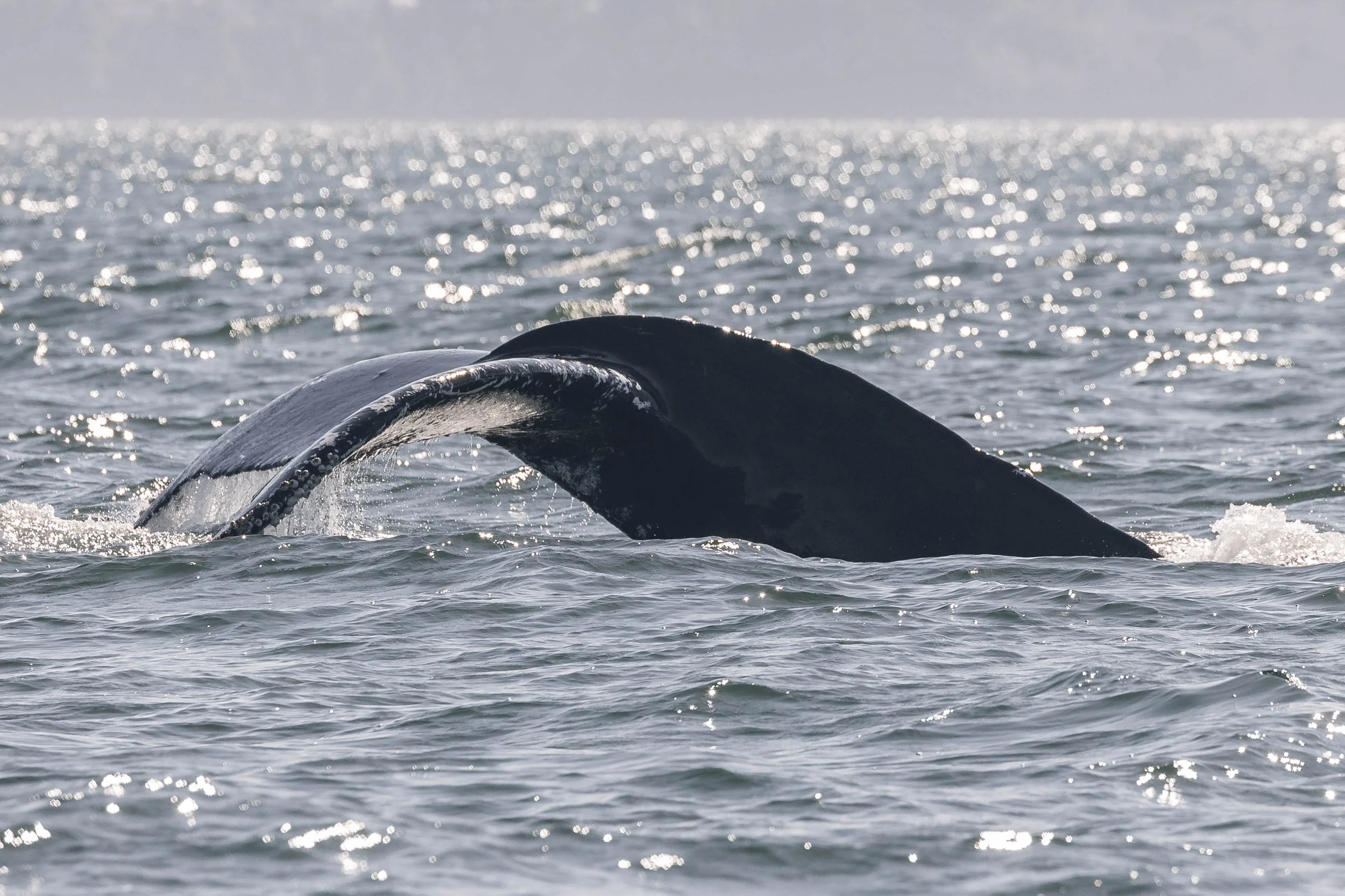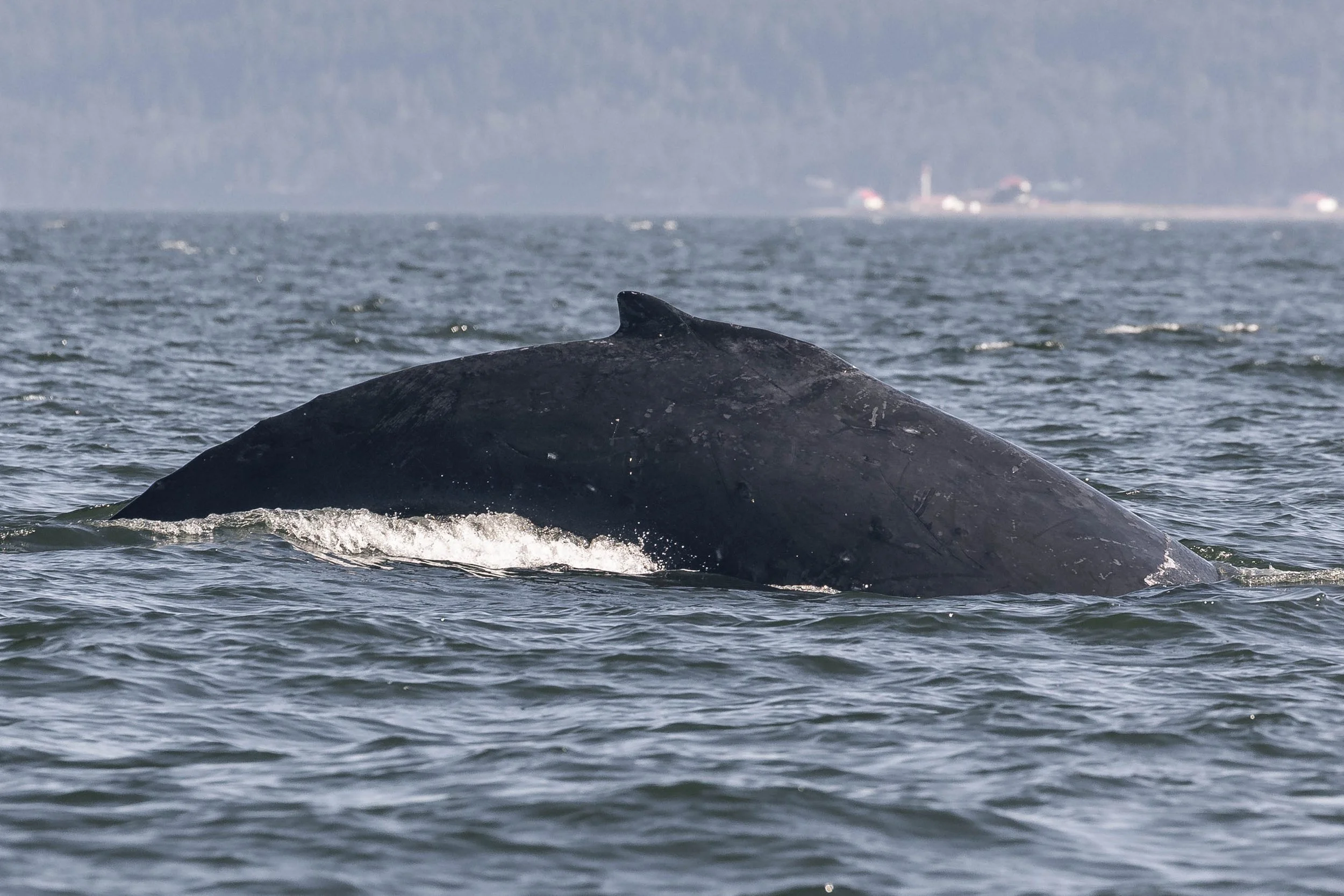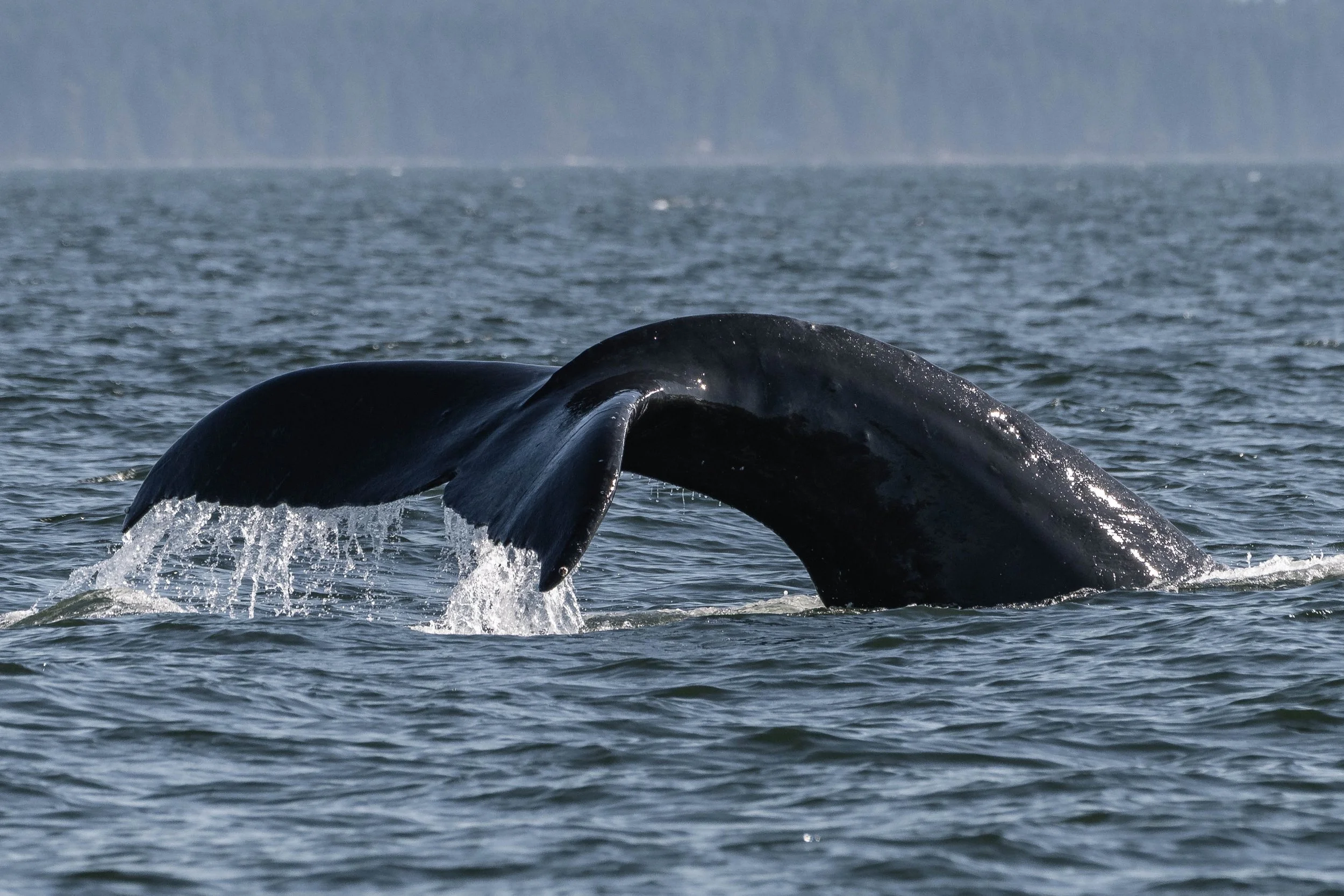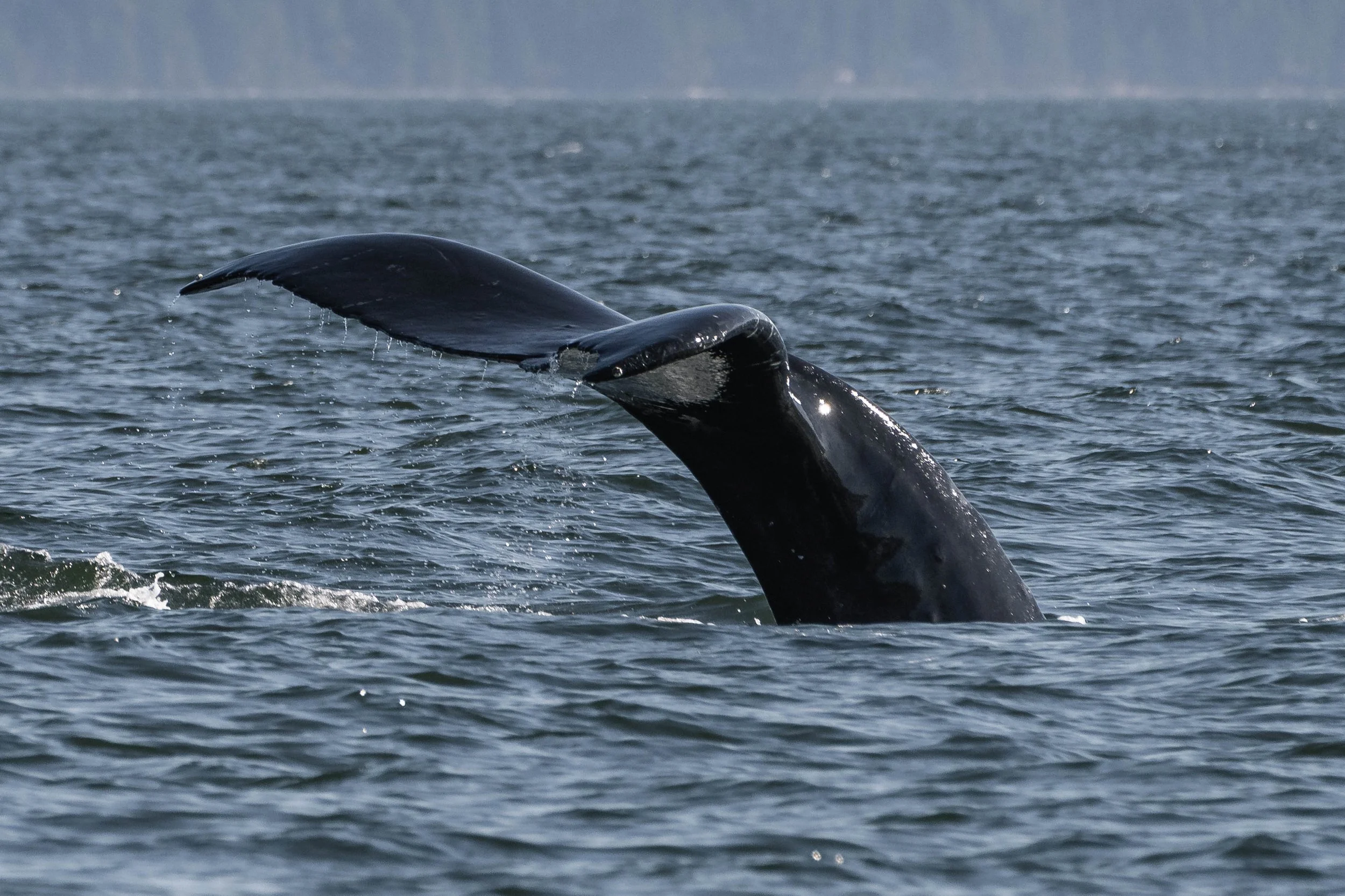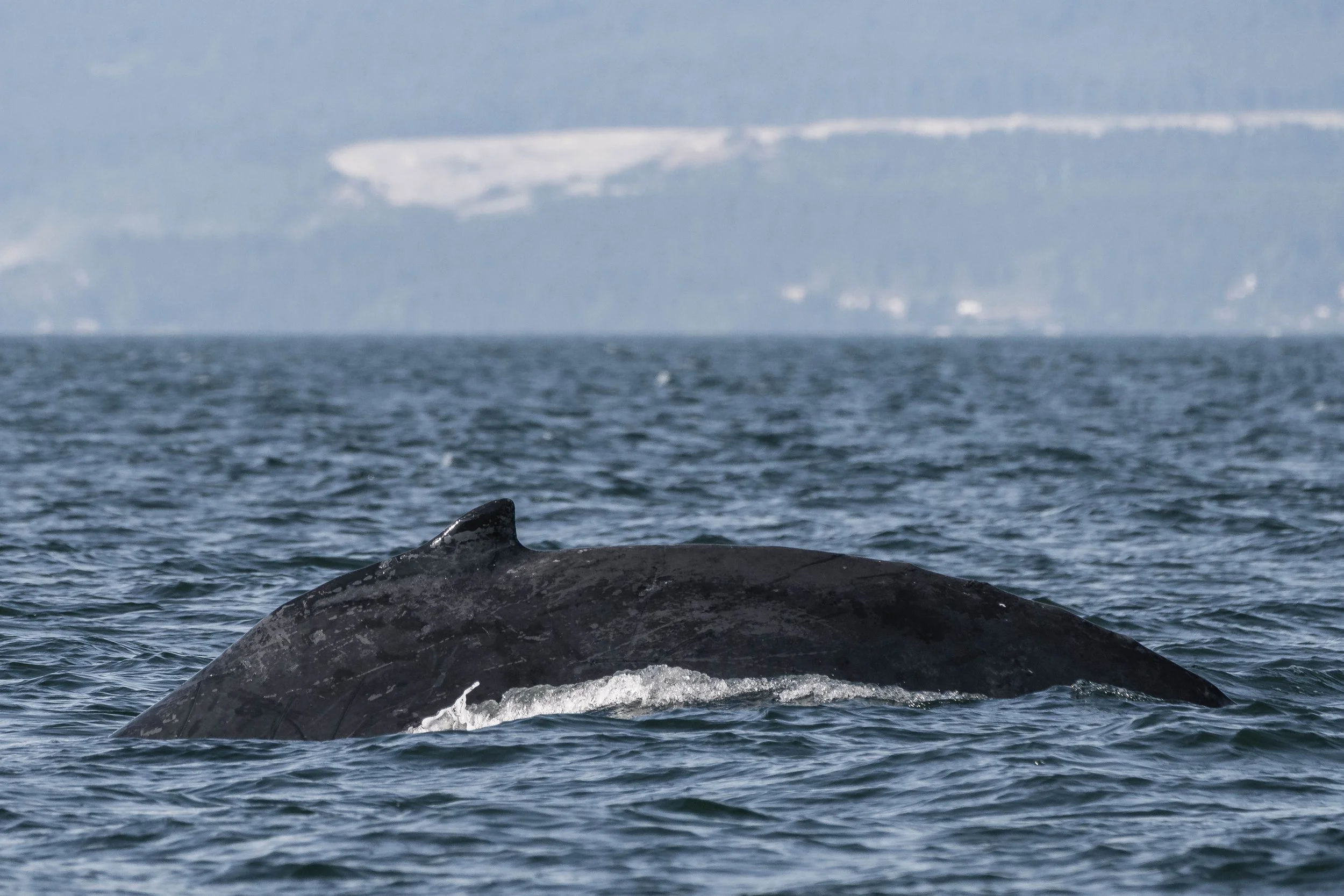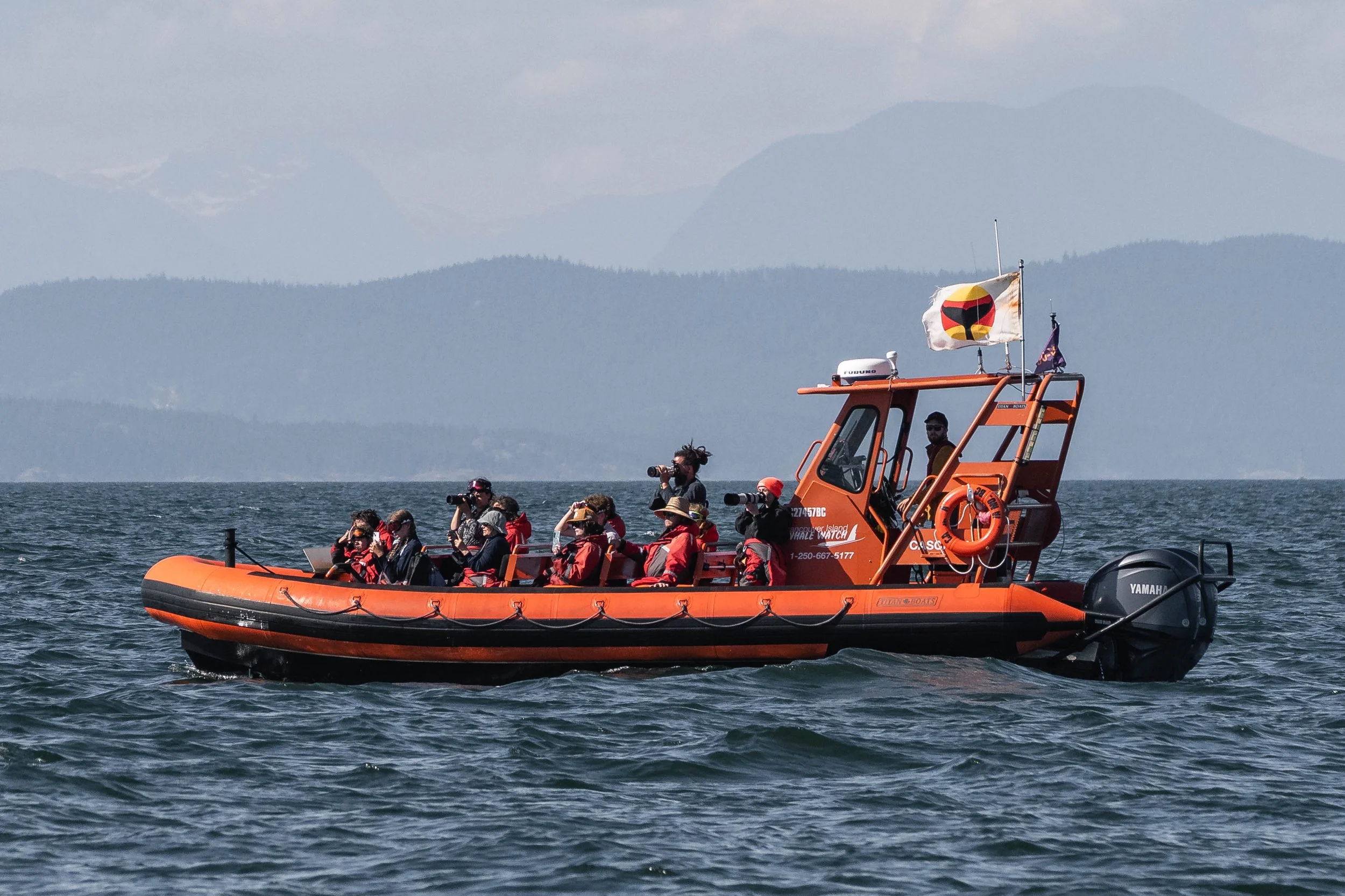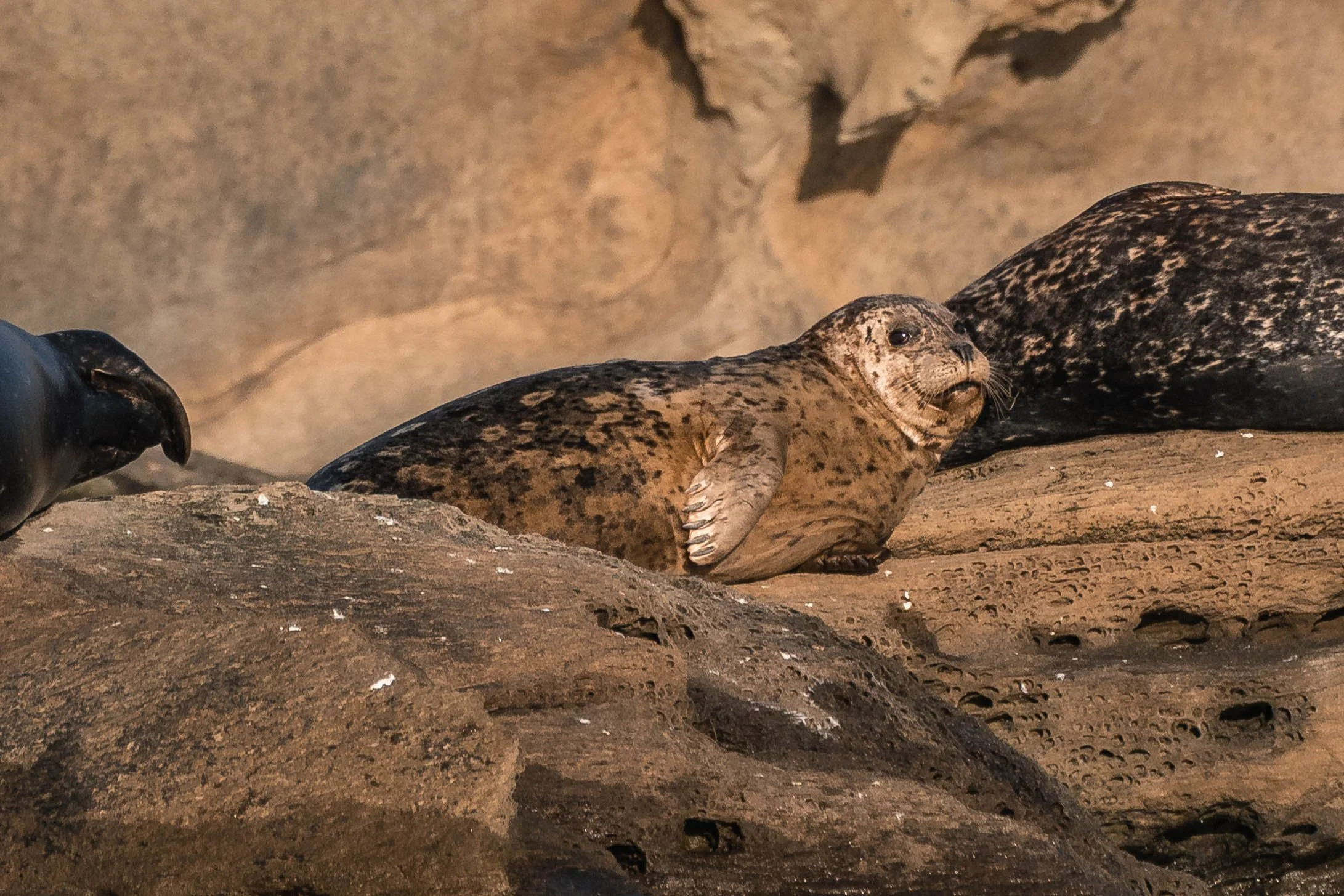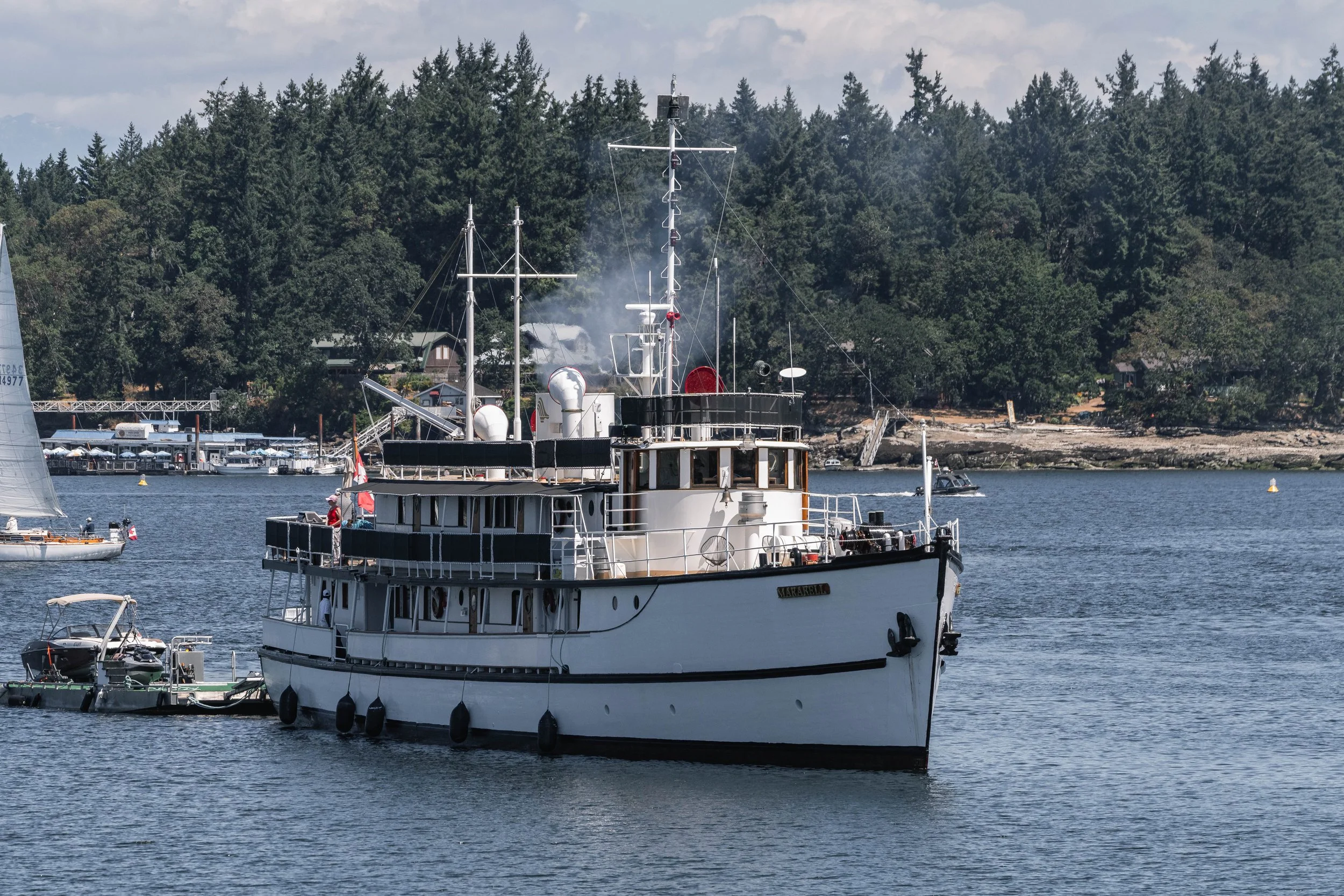July 24, 2025, 3:30 PM - Three Humpbacks feeding in the Strait of Georgia
It was another wonderful afternoon as we pulled away from the dock and set forth to find some whales! The weather has been particularly lovely this year, with very few windy or rainy days, making it extra enjoyable to be out on the water searching for giants. Leaving the dock, we never know where the day may take us or who we might see, but one thing is for sure: we are so incredibly fortunate to be able to hang out with gentle giants. Some days, we take for granted just how lucky we truly are to see these magnificent animals, but it’s always a sombre thought when we remember that at one time, there were nearly no humpbacks in this part of the world.
Whales have a shaky history with humans off the coast of British Columbia. In the 1800s, European settlers began opening up whaling stations around BC to harvest a variety of whale species. By the 1900s, several whale populations had been extirpated from areas around Vancouver Island. Unfortunately, this didn’t slow the hunts down. With newer technology came the ability to go further and catch whales more efficiently. Here in Nanaimo, a whaling station was opening up at Piper’s Lagoon only to shut down two years later after they had completely depleted the humpback population. The whalers' greed would ultimately put them out of business, with the last whaling station on the BC coast in Coal Harbour closed down in 1967 due to declining whale populations. We will never truly know how many whales were removed from BC waters, as whaling records were regularly inaccurate. Estimates suggest that between 1905 and 1967, approximately 25,000 whales were hunted.
In the Salish Sea specifically, the Humpback population had been completely decimated. It would be 30 years before humpbacks returned to the Salish Sea in any sort of noticeable fashion. In 1997, 30 years after the Coal Harbour whaling station closed, a female humpback named Big Mama (BCY0324) would wander back into our waters, changing the story forever. The return of Big Mama marked the beginning of the humpback comeback, and since her return, there has been a resurgence of activity in the area. Not only is this whale iconic because of her return, but she’s also lived up to her name! Big Mama has produced eight calves, and today we were fortunate enough to be around humpback royalty in the form of her daughter Poptart (BCY1014)! What’s even more incredible about this story is the way that Poptart is continuing her mother’s legacy. In 2023, Poptart gave birth to her first calf. While Poptart doesn’t have a calf this year, we can’t wait to see what the future holds for her!
Another mother who has taken a liking to our area is Strike (BCX1675) - a lovely lady who was travelling nearby to where we saw Poptart today. Strike is a beautiful adult female from Mexico who has become a consistent mother. Typically, we see female humpbacks produce a calf every two to three years, and Strike brought back a calf in 2021 and 2023. With no calf this year, it has us wondering if Strike could be pregnant - only time will tell!
On top of hanging out with some lovely ladies today, we also got to meet Yakima (BCX2182). While we’ve known this whale for a couple of years now, we don’t know if they are male or female, or even where they are from! One day, Yakima showed up in the area and has returned here to feed ever since. This is reminiscent of what happened with Big Mama! Maybe Yakima will one day be as legendary and as iconic as her!!
On top of humpbacks today, we were fortunate enough to see a variety of other wildlife, including Harbour Seals, Steller Sea Lions, Black Oystercatchers and Cormorants. You can check out all the wonderful photos from our trip below!
Please enjoy these photos by Marine Naturalists Hayleigh Hilbert and Val Watson.
Poptart fluking. Photo by Hayleigh Hilbert
Strike zooming by. Photo by Val Watson
Strike fluking. Photo by Hayleigh Hilbert
Strike’s dorsal fin. Photo by Hayleigh Hilbert
Going for a dive. Photo by Hayleigh Hilbert
Eyeing us up from the top of the ODAS buoy. Photo by Hayleigh Hilbert.
This doesn’t look very comfortable to us… Photo by Hayleigh Hilbert.
Yakima’s dorsal fin. Photo by Hayleigh Hilbert
Look at that arch as Yakima dives! Photo by Hayleigh Hilbert.
Yakima beginning to dive. Photo by Val Watson
Going down for a dive. Photo by Val Watson.
A fluke waterfall! Photo by Val Watson.
Yakima’s dorsal fin. Photo by Val Watson.
Yakima diving. Photo by Val Watson.
Our Semi-covered vessel, Kula, watching the whales. Photo by Hayleigh Hilbert.
Our open vessel, Cascadia, watching the whales. Photo by Val Watson.
What a chunky little seal! Photo by Hayleigh Hilbert.
Peeking over at us. Photo by Val Watson.
A Black Oystercatcher resting with its beak tucked under its wing. Photo by Val Watson.
A gulp of Cormorants together on the rocks. Photo by Hayleigh Hilbert.
The Marabell - originally a US Mindsweeper ship, it was at one point used as a survey vessel - it is now a beautifully converted pleasure vessel. Photo by Val Watson.





